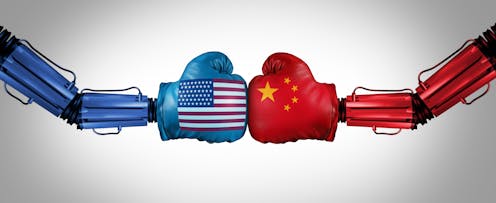how China’s embrace of open-source AI caused a geopolitical earthquake
- Written by Peter Bloom, Professor of Management, University of Essex

We are in the early days of a seismic shift[1] in the global AI industry. DeepSeek, a previously little-known Chinese artificial intelligence company, has produced a “game changing”[2]“ large language model that promises to reshape the AI landscape almost overnight.
But DeepSeek’s breakthrough also has wider implications for the technological arms race[3] between the US and China, having apparently caught even the best-known US tech firms off guard. Its launch has been predicted to start a "slow unwinding of the AI bet”[4] in the west, amid a new era of “AI efficiency wars”[5].
In fact, industry experts have been speculating for years[6] about China’s rapid advancements in AI. While the supposedly free-market US has often prioritised proprietary models, China has built a thriving AI ecosystem[7] by leveraging open-source technology[8], fostering collaboration between government-backed research institutions and major tech firms.
This strategy has enabled China to scale its AI innovation[9] rapidly while the US – despite all the tub-thumping from Silicon Valley[10] – remains limited by restrictive corporate structures. Companies such as Google and Meta, despite promoting open-source[11] initiatives[12], still rely heavily on closed-source strategies that limit broader access and collaboration.
What makes DeepSeek particularly disruptive is its ability to achieve cutting-edge performance while reducing computing costs – an area where US firms have struggled due to their dependence on training models that demand very expensive processing hardware[13].
Where once Silicon Valley was the epicentre of global digital innovation, its corporate behemoths now appear vulnerable to more innovative, “scrappy”[14] startup competitors – albeit ones enabled by major state investment in AI infrastructure. By leveraging China’s industrial approach[15] to AI, DeepSeek has crystallised a reality that many in Silicon Valley have long ignored: AI’s centre of power[16] is shifting away from the US[17] and the west.
It highlights the failure of US attempts to preserve its technological hegemony through tight export controls[18] on cutting-edge AI chips to China. According to research fellow Dean Ball[19]: “You can keep [computing resources] away from China, but you can’t export-control the ideas that everyone in the world is hunting for.”







